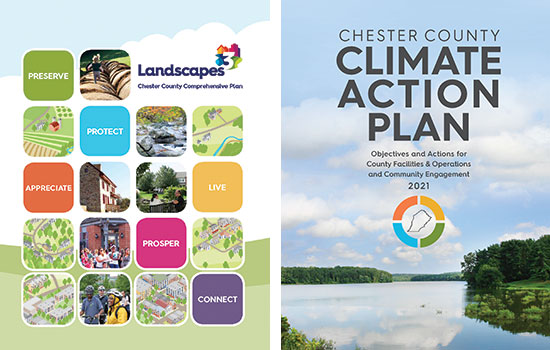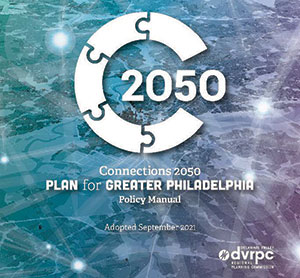Overall Planning Guidance for Solar Facilities
Mankind's impact on climate change is becoming more accepted, particularly as people see a rise in catastrophic storms that are exacerbated by rising temperatures and the resulting extra moisture in the air. This has led to many different levels of government expanding their planning efforts to encourage solar power as a key renewable energy resource that does not produce greenhouse gases.
Pennsylvania Planning Guidance
Since the Climate Change Act of 2008, Pennsylvania has been preparing for climate change in a wide variety of ways, including the creation of climate action plans. The state's most recent plan, the Pennsylvania Climate Action Plan, was adopted in 2019 and includes a target of reducing greenhouse gas emissions by 80% between 2005 and 2050. Two of the strategies in the plan are very relevant to solar power. These are:
- Increase use of clean, distributed electricity generation resources
- Create a diverse portfolio of clean, utility-scale electricity generation
Solar power is addressed more directly in Pennsylvania's Solar Future Plan, which has 15 strategies to encourage solar power. One of these strategies is focused on siting and land use issues, noting that there is sufficient land in the state to meet the demand for solar facilities. This strategy states: "Support the creation and adoption of uniform policies to streamline siting and land-use issues while encouraging conservation."
The plan has a target of 10% of the state's electricity (11 GW) coming from in-state solar by 2030. (It currently is less than 0.5%.) If 90% of in-state solar comes from grid-scale sources, this will involve 10 GW of solar generation and would consume 80,000 acres of land.
The state solar plan makes a few key points:
- Most parcels in the state won't be big enough for larger grid scale projects, which means these projects will often involve multiple properties and owners.
- Various preservation and conservation programs around the state may limit the development of solar power facilities on specific, preserved properties.
- Less valuable land, such as landfills, abandoned mine lands, and other brownfields are more appropriate locations for solar facilities, while agricultural land, forest land, and valuable habitat are less desirable locations for these facilities.
Philadelphia Region Planning Guidance
Regional planning for the southeastern Pennsylvania area is done by the Delaware Valley Regional Planning Commission (DVRPC), which prepares a long range plan every few years. Their 2050 plan, Connections 2050, has a very strong emphasis on climate change and reducing greenhouse gas emissions. The plan has a goal of:
Reducing greenhouse gas emissions to net zero by the year 2050 and preparing communities for the impacts of climate change.
To help accomplish this goal, the plan advocates for supportive renewable energy ordinances and power purchase agreements for solar photovoltaics, wind, and hydroelectric power electricity.
Chester County Planning Guidance
In southeastern Pennsylvania, many county governments also support expanded renewable energy and solar power, including Chester County.
One of the objectives in Landscapes3, the county's 2018 comprehensive plan, is to "promote safe, sustainable, and resilient energy and communications systems…" The plan notes that renewable energy options can be expanded by assisting municipalities with their ordinances and review processes.
The county's 2021 Chester County Climate Action Plan tackles climate change head on and includes a variety of recommendations supporting solar power. These include exploring opportunities for installing solar at county buildings and properties, procuring energy from renewable resources, analyzing the potential to expand on-site solar energy generation, providing technical assistance to municipalities on solar power, and a host of other initiatives that would support solar power.

View the county's comprehensive plan, Landscapes3.
View the Chester County Climate Action Plan.



